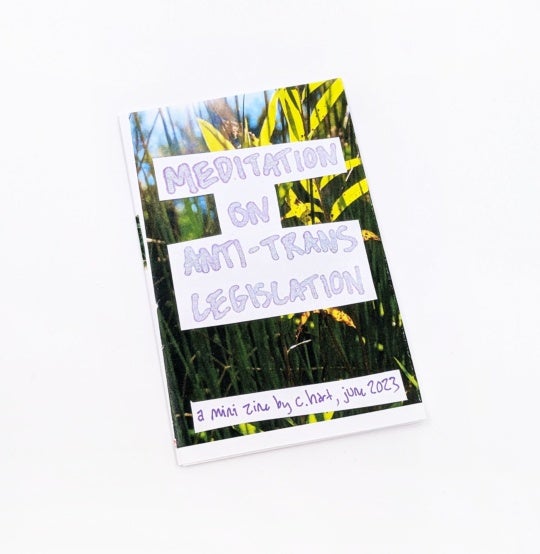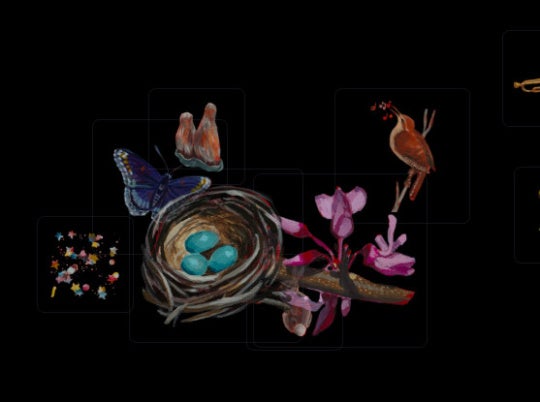
In death, Jean-Michel Basquiat has the same paradoxical, conflicted relationship towards the art world that he did while alive. Mocking its institutional “BOOSH-WAH-ZEE FANTASIES,” for him, was never in conflict with staking out Andy Warhol’s offices in the hopes of getting discovered. As a result, his work remains both inside and outside, stubbornly resisting being incorporated into any fixed resting place. “The Unknown Notebooks,” on view at the High Museum through May 29, promises to pull back the curtain on Basquiat’s process and deepen the discussion about how his work should be understood.
The exhibition premiered at the Brooklyn Museum in April 2015, and was curated by Dieter Buchhart, an independent curator and Basquiat specialist, with Tricia Laughlin Bloom, the Brooklyn Museum’s former associate curator of exhibitions. Its central attractions are eight of the artist’s hardback composition notebooks that span from 1980 to 1987. Each one has been carefully disassembled and presented as a sequence of pages, either framed and hung individually or laid out within long vitrines. The notebooks cover Basquiat’s mature creative years, but their presentation isn’t chronologically ordered, and there is little to distinguish them from each other in terms of their content.

The pages contain a few images, his signature teepee among them, but mostly they are filled with text ranging from single phrases to paragraphs, usually done in his careful block capitals. These are not simply notes but also small-scale experiments, since his placement choices are both deliberate and varied. These more self-contained studies of layout echo the rhythmic use of space in his larger works, in which text beats out a pattern as it scatters across the surface. Several of the works on paper resemble preliminary drafts for his painting Jimmy Best… (1981), although it isn’t included in the exhibition. All of this speaks against the easy tendency to see his works, despite their surface casualness, as unplanned gestural eruptions.
The notebook texts play with a number of formal devices, including repetition: On one page, “roach eggs” is written seven times in a column, piled up like a squirm-inducing reminder of the eggs themselves. Descriptions expand from one page to the next, as when “I feel like a citizen it’s time to go and come back a drifter” becomes “I feel like a citizen in this parking lot county fair/ It’s time to Greyhound and come back a drifter/ Put it all in one bag.” Some passages also occur with exploratory variations, as when he reuses the phrase “her eye became a beggar in Spain” in several different contexts.
Their content is as variable as their form. Occasional bursts of imagery (“a crescent sun”) sit alongside recorded fragments of conversation; writing from signposts, pavement (“pedxing”), and shop windows; and long passages of scientific jargon (“contamination period coincides with mating period in mutant specimens”) with equations. There are also fragmentary mini-narratives centering on dirty diners, cops, asphalt, “moneymen,” and winos, a down-and-out menagerie drawn from Beat literature of Kerouac and Burroughs. Some lines have the ominous slantwise logic of cut-up compositions: “in cross section of bad asthetic the blank wins out.”

The fact that Basquiat normally wrote on only one side of a notebook page has suggested that these are meant to be seen as autonomous drawings, but this is the least convincing way to regard them. The notes mostly aren’t visually or conceptually rich enough to sustain this sort of individual attention. Claims to their status as concrete poetry also seem oversold: like many SAMO© tags the language is incomplete and allusive, but here it’s missing the density and diagrammatic qualities of the urban wordscapes that populate his larger, finished works.
Basquiat himself sometimes denied that his magpie collecting of words and lists had any deeper significance, calling it a mere form of “name-dropping.” While this may be a cagey evasion, there’s no denying that it often hits the mark, as with Famous (1982), a two-sided monolith, like an excised section of wall, covered in text that mashes up random three-word phrases (“regular processed cheese,” “trick black soap”) with doodles of Captain America, ominous medical references (“thoracic duct”), and allusions to Plotinus.

As process documents, the notebooks shed light on the sort of patient collecting and reworking of material that lies behind works like these. With luck, this will also decisively move Basquiat’s work beyond the absurd debates over “primitivism” that ensnared it during his lifetime. Despite the value of the notebooks for scholars, though, it’s not obvious how long they will hold the attention of a more casual viewer.
Measured in market terms, Basquiat’s celebrity has only increased posthumously. His works sell at a steady pace and astronomically rising prices: in 2013 Dustheads (1982) went for $48 million, and sales totals for 22 works clocked in at $266 million. His photographic likeness and iconic symbols have seeped into everything from rap music to clothing lines. There is a faint sense that this exhibition also contributes to the unstoppable Basquiat industry, which is always hungry for anything that might have come from his hand.

At the same time, relative to his cultural impact, Basquiat is wildly underrepresented both in academic art history and in major museum collections. As Bob Nickas points out, MoMA has a handful of his drawings but not one of his paintings. Nor are there any at LACMA, the Art Institute of Chicago, or the Guggenheim; the Whitney and MOCA Los Angeles are exceptions, as is the High Museum, which features the vibrant Untitled (Cadmium) (1984) on view as part of the current exhibition. “The Unknown Notebooks” is a slightly esoteric look at Basquiat’s work, but a valuable one insofar as it opens the conversation about how to remedy these unfounded exclusions.
“Basquiat: The Unknown Notebooks” runs through May 29 at the High Museum of Art in Atlanta.
Dan Weiskopf is an associate professor of philosophy and an associate faculty member in the Neuroscience Institute at Georgia State University. He is the author, with Fred Adams, of An Introduction to the Philosophy of Psychology (Cambridge University Press).




